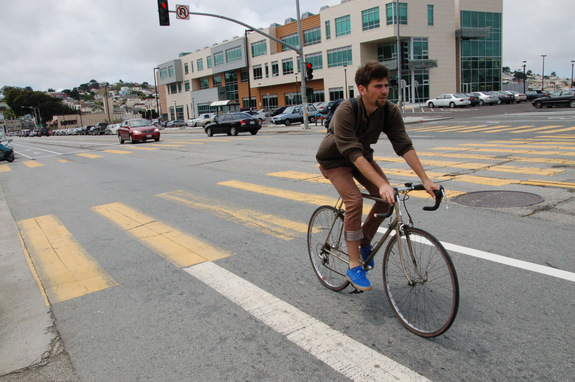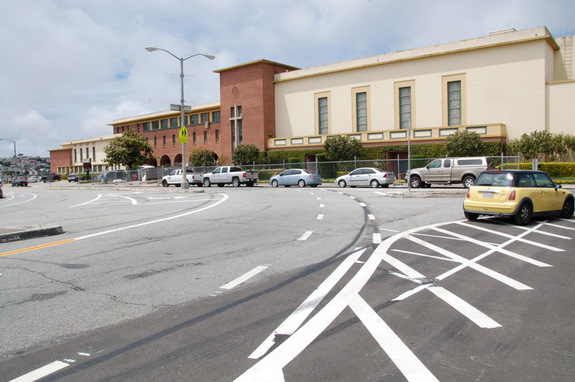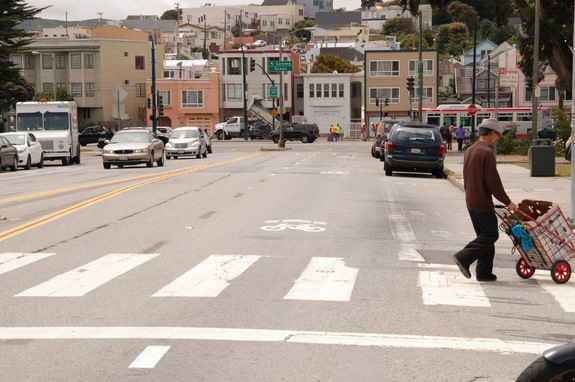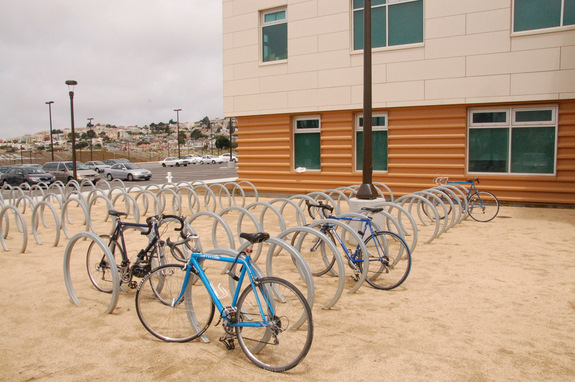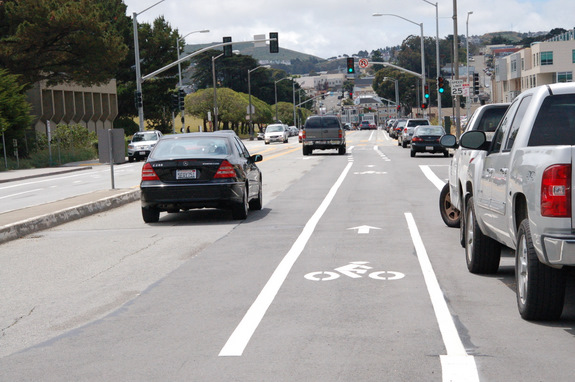
The SFMTA striped new bike lanes on Phelan Avenue last week, providing a safer route for commuters, residents, and students at City College of San Francisco and Riordan High School in the Sunnyside neighborhood.
"It's always been one of those streets where there's a lot of confusion and chaos for all people," said Hitesh Soneji, professor of Sustainability Science at City College. "The best option to go to campus [by bike] was always through either a back way or by riding on the sidewalk, basically creating some other 'chaos'. So I think this is a big plus."
The lanes were approved as part the SF Bicycle Plan, which the San Francisco Bicycle Coalition noted in its newsletter this week is now halfway complete. The reconfiguration replaced two travel lanes and has appeared to calm motor traffic on the street. Another proposed design option [pdf] would have replaced car parking instead.
SFBC Director Leah Shahum said it's "a welcome improvement for the growing numbers of people biking to City College and to the neighborhoods in the southern part of the city."

"This is a step toward a more complete north-south bicycling route that is literally Connecting the City to become more safe and accessible," said Shahum.
Lauren Fondahl, who uses Phelan on her bike commute from Ingleside to SoMa where she works for the Environmental Protection Agency, said the street is now "a lot safer."
"I thought that was one of the more dangerous streets," said Fondahl. "There were two lanes going each way and bicyclists would have to stay over to the side of one lane, so the car would have to swerve over into the left lane to make room for the bicyclist."
Adjacent to City College, Soneji pointed out that a "gigantic" parking lot sits on "super valuable real estate" that could otherwise be used for green space or more buildings. Encouraging cycling and other alternatives to driving, he noted, could reduce the demand for that parking.
"I think that's a product of the pressure from people who think they have no other viable option to get to City College, whether it's the faculty or the students asserting that there has to be more parking," said Soneji. "If we can encourage other ways to get to campus, whether it's by Muni, BART, or bicycle, I think we can help to alleviate that."
But a shift towards sustainable transportation seems to be gaining momentum at a large institution where change typically happens slowly, he said.
"If you start to see those lanes go in, even if you're not going to do it yourself, you start to see it as a more viable option for everybody to get there."
